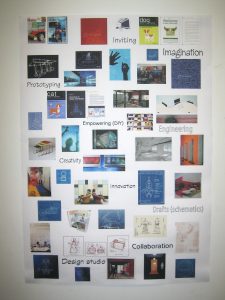 Creativity requires pattern detection. Sometimes it’s called a tear sheet or swipe file. It’s a collection of images, words, articles, cartoons, and pretty much whatever can be included. All those elements are meant to reflect your brand.
Creativity requires pattern detection. Sometimes it’s called a tear sheet or swipe file. It’s a collection of images, words, articles, cartoons, and pretty much whatever can be included. All those elements are meant to reflect your brand.
It doesn’t have to be a logical connection. It has to do with feeling. Mood boards let you draw on right-brain thinking. You’ll draw on unbounded qualitative patterns that aren’t organized. It’s not about sequences. It’s about clusters of images.
The purpose of a mood board is to push the participants toward deciding on a style guide. It’s the time to play with colors, fonts, overall looks, and any creative aspect that will stand up to represent your brand.
But It’s All Just Aesthetics, Right?
Wrong. Don’t let the name fool you. Your mood board has a crucial role to play in helping everyone distill the personality of your brand. And yes, your brand has a personality. Hopefully, you’ve crafted it yourself. If not, your customers will ascribe it to you. That’s something you want to avoid.
If you tend to be more analytical or logical, think of a mood board for your brand as an alternative to a mind map. And that’s basically what it is. Instead of looking for patterns and correlations between words, you’ll do that for colors, lightness, images, and even sound.
People creating mood boards often go big for starters. They look at the industry they’re in, and the customers. Are your customers young? The mood board should reflect their worldview.
Can You Get a Little Too Moody?
There are no set rules for a mood board. The objective is to gather enough examples to thoroughly express the mood of your brand. A key point to remember is that you won’t necessarily be looking at individual elements. A mood board is meant to taken in as a gestalt. That’s a fancy word meaning that you’re looking at a bunch of things that together mean more than the sum of their parts.
Adding to a mood board is a random act. Anything can remind you of the personality of your brand. A candy bar. A song. An animal. The beauty of this randomness is that it forces your brain to jump the tracks. It causes you to engage in lateral thinking.
You decide to add an image of a seashell to the mood board. Why? Seashells remind you of the beach, and the beach is relaxing. Your product is a brand of sheets and comforters. And away you go!
The soothing sounds of waves crashing on the beach. The blue hues of the ocean. The light tans of the sand. All these sensations and moods communicate font styles, primary colors used in graphics, and even the instruments used in your commercial or video music backgrounds.
It might seem like people working on a mood board are just playing, but it’s serious stuff. And how often do you get to do something serious and important that involves deciding whether an owl or an elephant is a better match for your company.
Permission to Play
If you haven’t ever tried assembling a mood board, give it a go. It can be relaxing. Your goal is to find as many things as possible that represent the feeling of your brand. We live in a digital world, so it’s not surprising that there are plenty of websites where you can make a mood board, or see and contribute to others. The biggest one of all is Pinterest. Head over there for a healthy dose of mood board examples.
Yes, you’re supposed to enjoy this. It might feel a lot like something you did back in grade school. Don’t stifle your enjoyment. It’s an intelligent approach to determine the creative portrayal of your brand. “Creativity,” Albert Einstein said, “is intelligence having fun.”
Bring us your mood boards. They’ll be amazingly helpful. We can use what you’ve assembled to understand your brand and what it should communicate. We’ll help you match color, style, and even texture. You’ll end up with a custom solution. And we promise to follow you on Pinterest.

